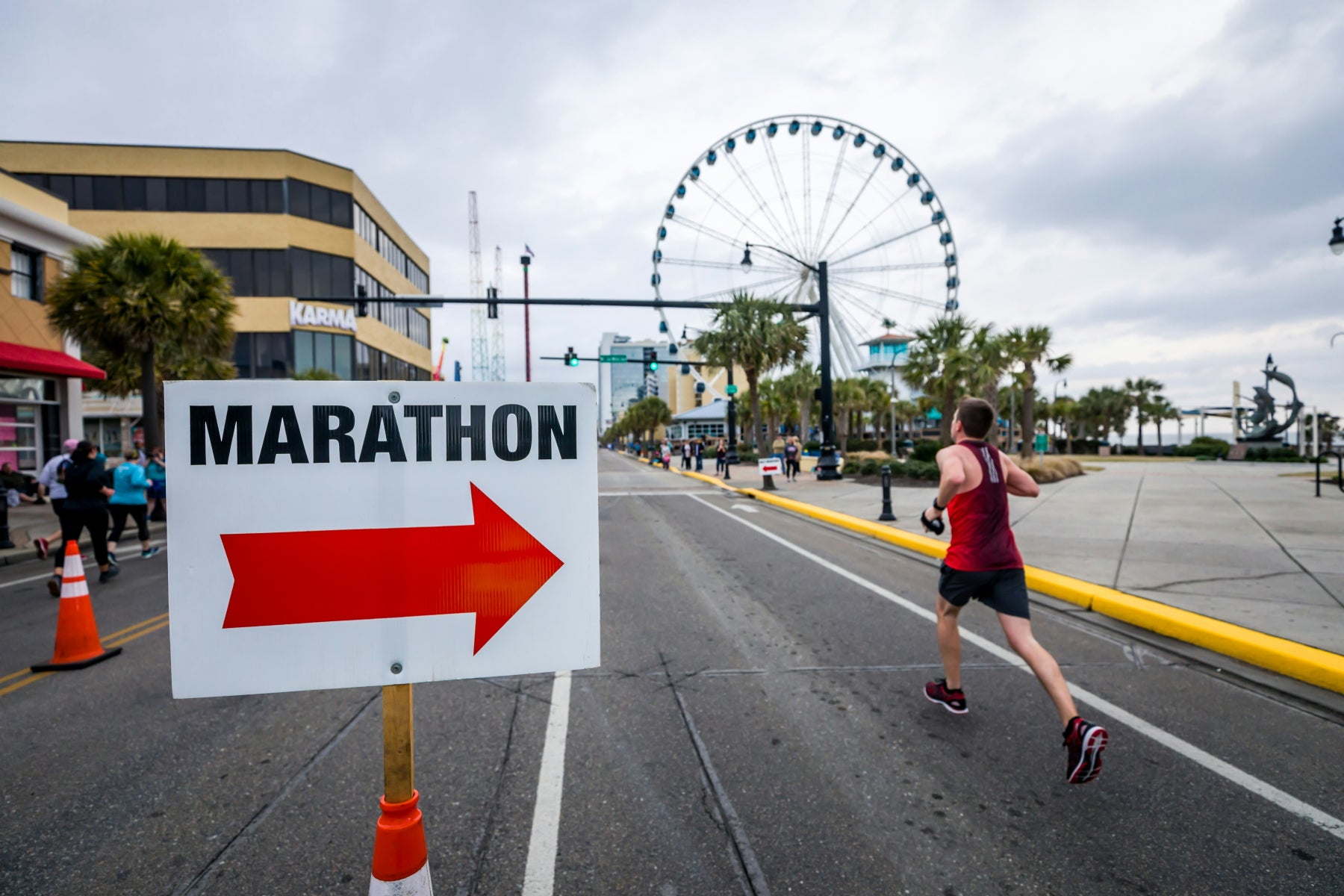Wenn die wichtigen Triathlon-Rennen der Saison absolviert sind, möchten viele Sportler ihre Form noch mitnehmen, um im Herbst noch einen Marathon zu laufen, möglichst mit neuer Bestzeit. Die Vorbereitung auf die 42,195 Kilometer erfordert jedoch noch einmal einen spezielleren und fokussierteren Trainingsansatz.
Laufumfang vs. Erholung
Was und wieviel kann man zu diesem Saisonzeitpunkt noch trainieren? Einerseits müssten für eine optimale Marathon-Form die Laufumfänge nochmals deutlich erhöht werden, andererseits braucht der Körper nach den Strapazen der langen Saison Erholung, um nicht überfordert zu werden. Wer ein paar Trainingsgrundsätze beachtet, für den steht einer Marathonteilnahme zum Saisonende aber trotzdem nichts im Wege.
Ausdauer ist nicht gleich Ausdauer
An einer guten Ausdauerleistungsfähigkeit für eine Wettkampflänge von 3 bis 4 Stunden fehlt es den meisten insbesondere nach der langen Saison nicht. Wenn es um lange Läufe geht ist Ausdauer aber leider nicht gleich Ausdauer. Laufen stellt eine hohe Belastung für das Binde- und Stützgewebe des Körpers dar.
Für einen Marathlonlauf mit einer Zeit von 3 Stunden sind circa 30.000 Schritte notwendig und bei jedem dieser Schritte wirkt ein mehrfaches des Körpergewichts auf das muskuloskeletale System. Die Ausdauerfähigkeiten des Herz-Kreislauf-Systems sind zwar vorhanden, aber die hohe Belastung von Muskel und Gewebe sorgt ohne gezielte Vorbereitung dafür, dass spätestens nach Kilometer 30 die Muskeln „zu“ machen.
Laufumfang dosiert steigern
Für eine erfolgreiche Marathonteilnahme ist deshalb insbesondere eine Gewöhnung an die lange Laufbelastungen nötig - gerade für Kurzdistanzathleten. Lange Läufe mit mehr als 90 Minuten Dauer erfordern jedoch eine teils deutlich längere Regenerationszeit.
Wichtig ist also im Hinblick auf die Marathonvorbereitung, dass der Körper genügend Zeit bekommt sich an die verlängerten Laufsbelastungen anzupassen. Dies wird durch einen langsam, aber trotzdem kontinuierlich steigenden Laufumfang erreicht. Wer Umfang und/oder Intensität des Trainings zu schnell steigert, riskiert im schlimmsten Fall Überlastungsschäden oder typische Läuferverletzungen, wie z.B. Achillessehnenentzündung, Fersensporn oder Schienbeinkantensymptom.
Die längsten Laufeinheiten sollten eine maximale Länge von 2:30 Stunden oder 30-32 Kilometern nicht übersteigen. Dies gilt auch für alle die deutlich mehr als 3 Stunden als Zielzeit haben, da der Anpassungseffekt bei dieser Länge schon sehr hoch ist und gleichzeitig die erforderliche Erholungszeit einen sinnvollen Rahmen noch nicht übersteigt.




















